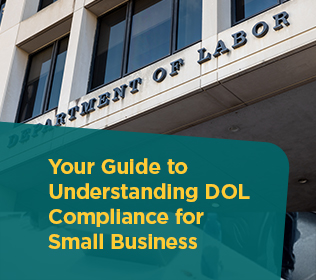
Running a business is tough, and while every business owner hopes never to lay off staff members, it is also important to be prepared in the event of a difficult situation. Layoffs and reductions in workforce can help a company downsize if the need arises, but they should be handled with care and sensitivity to treat both current and former employees with respect. Further, there could be serious consequences if mistakes are made during the layoff process. Read on for guidance on how to effectively and ethically handle a reduction in workforce.
Making Difficult Choices: Understanding the Reason for Layoffs
There are many reasons why a business may be forced to consider layoffs. Though it’s a last resort that business owners prefer to avoid, it could be a reality. According to a recent report, 721,677 job cuts were planned in 2023, a 98% increase from the 363,824 cuts announced in 2022. This statistic demonstrates that layoffs may occur despite all the best intentions.
There are many situations that cause a business to reduce personnel. One of the most common reasons is a need for cost-cutting measures. If there are fewer demands for a business’s services, the business has debts, or has lost key customers, these situations may force business owners to consider layoffs. Mergers and acquisitions may also result in layoffs. As a business acquires another company, there may be redundancies in personnel that need to be corrected.
Defining the Terms: What Is a Layoff, Reduction in Force (RIF), And a Furlough?
Terms can vary when describing the end of an employee’s tenure with a company. However, these terms have very different meanings. Learn what a layoff, a reduction in workforce, and a furlough mean.
What Is the Difference Between Layoffs and Reduction in Force (RIF)?
A layoff is a separation from employment due to a lack of work. It is usually a temporary situation, or at least it is intended to be. The term “layoff” is often mistakenly used when an employer terminates a position with no intention of re-hiring. This is a reduction in force (RIF). RIF refers to a permanent reduction in staff and is not temporary. Sometimes, layoffs can lead to RIF when an eliminated position was meant to be temporary but becomes permanent.
Is a Layoff the Same as Being Fired?
A layoff is not the same as being fired. It occurs when the business needs to reduce staff, and it is not the fault of the employees affected. Firing is a result of misconduct and is due to some action by the employee. If an employee was not performing their job duties, broke company policy, or committed another serious infraction, this could cause an employee to be fired. Therefore, being laid off is not the same as being fired.
What is a furlough?
A furlough is a mandatory temporary leave of absence from which the employee is expected to return to work or to be restored from a reduced work schedule, as defined by SHRM. Furloughs became a well-known term during the pandemic, in which nearly all businesses were subject to a mandatory government shutdown. Being furloughed is very different from being laid off, fired, or subject to a reduction in force.
Preparing for the Reduction in Force Process
When business owners make the difficult decision to implement a reduction in workforce, they must first prepare carefully. First, conduct a comprehensive evaluation of the company’s financial health. This process is crucial to fully understanding the scope of the situation so that leaders can plan for how widespread the reduction in workforce needs to be.
Important questions to answer before undertaking any serious action.

How many employees must be laid off, and can the company anticipate hiring them back or replacing them if the situation improves?

How will tasks be completed with a smaller staff, and are there any unnecessary duties that can be reduced or eliminated?
After taking these questions into consideration, the next step is to develop a clear plan outlining the objectives and scope of the RIF. If the goal is to reduce costs by a certain amount, define how the RIF will accomplish this and with what methods. Further, establish protocols and ensure that your plan specifies which leaders are responsible for certain tasks. Finally, and arguably one of the most important steps, leaders must prepare for how to communicate the reduction in workforce plan to their affected staff.
HR Compliance: Handling the Logistics of the Reduction in Force
When a business must conduct layoffs, the process needs to be handled with the utmost care. The employees who are being laid off deserve compassion and consideration during this difficult and stressful period. The first step is to consult with an attorney to ensure that compliance is maintained throughout the process. HR compliance is hugely significant, and a wrong move can result in serious fines or even litigation. There are certain compliance regulations that may affect a business in the process of planning a reduction in workforce.
The Worker Adjustment and Retraining Notification, also known as WARN, requires businesses to provide advance notice of office closures and mass layoffs. Note that a WARN notice is only required when a business with 100 or more full-time workers is laying off at least 50 people at a single site of employment.
The EEOC (Equal Employment Opportunity Commission) also provides guidance on how a layoff should be conducted. For example, employers must ensure that layoffs are not based on any discriminatory reasons, such as race, color, religion, or gender identity. It’s also crucial to carefully document the layoff process to avoid any wrongful termination claims.
When it comes to communicating with the affected employees, layoffs should be done in person, if possible, or at least on video. Allow the employee time to ask questions and process this change. A layoff is an uncertain and scary time for an employee, and business leaders need to be considerate of their feelings. Some companies may require a security escort as part of the process, which should be arranged in advance if necessary. Inform the employee of any severance packages they may be entitled to as well as resources for their transition.
If you need to lay off any remote employees, do so over a video conference. “Virtual firings should be conducted just like their in-person counterpart…Employers should have ample documentation, adhere to legal and industry guidelines, and arrange for the return of any company-owned property,” says an HR leader. Layoffs for remote employees should be as compassionate as possible, and employees should not be informed over email.
Businesses may also provide networking contacts if desired and assist laid-off employees in finding a new position. This is unnecessary, but it is an added act of kindness for former employees experiencing a stressful transition. It also encourages open lines of communication, allowing either the employee or the business owner to reconnect in the future.

Communicating Upcoming Layoffs to Your Remaining Employees
The next step in the process is to communicate layoffs to the team members who are staying. It’s important to be direct with employees about what is happening. Delaying or hiding the news causes even more anxiety for the team. This blog post provides further tips on how to handle difficult conversations with team members. A layoff often decreases morale, so this is an opportunity to rely on team leaders for insights into how employees are feeling. Employees may feel scared that further layoffs will come and frustrated or upset with the employees who were chosen to be part of the reduction in force. Encourage team members to validate their feelings, acknowledge the difficulty of this process, and reiterate the organization’s commitment to their well-being and success. Team leaders should keep the lines of communication open, allowing their reports to express their concerns and offer feedback where appropriate.
In this situation, psychological safety is important. This refers to an environment in which it is safe to express ideas, concerns, questions, or mistakes. Psychological safety is a part of an inclusive company culture and is key to a healthy office environment. Employees should feel safe to voice their concerns, and team leaders should be empowered to acknowledge and respond to these difficulties.
Moving Forward After a Reduction in Force
After all steps in the reduction in workforce are complete, reflect on how the process went. What can be learned from this? Are there processes that can be implemented to ease any future business concerns? If morale is low, what can team leaders do to regain employees’ trust? Now is the time to focus on moving the business forward, recommitting to both customers and employees. Continue to encourage communication amongst team members and rely on team leaders to offer insight into how employees are feeling. While layoffs are challenging, they are something that many business owners must face, and leaders must emphasize the value of resiliency and adaptability in times of change.

Handling a Reduction in Force with Care and Compassion
One of the more difficult workplace challenges is facing the need for layoffs, but with the right preparation, adherence to compliance regulations, and compassionate management of both current and former employees, business owners can move forward. Business owners don’t need to go through layoffs alone.
A PEO is a significant support system for tough choices like this one. PrestigePEO’s HR consulting and workplace compliance services will steer your business through difficult situations and provide you with guidance and actionable solutions. Having a resource that business owners can rely on is crucial, and PrestigePEO is ready to provide expert assistance in your toughest situations. Contact us today to learn more about what PrestigePEO can do for your business.




